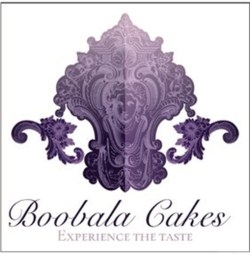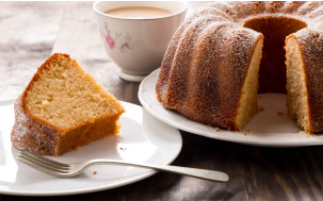In the realm of baking, where flour and sugar dance in symphony with butter and eggs, there exists a creation that stands as a testament to both simplicity and elegance – the Bundt cake. This intricately designed dessert has captured the hearts and taste buds of many, sparking curiosity and wonder in those who have yet to unravel its mysteries. As we delve into the world of baking wonders, we find ourselves standing at the crossroads of tradition and innovation, pondering the question that echoes through kitchens worldwide: *What is Bundt cake all about?*
Picture this: a moist, flavorful cake, adorned with a mesmerizing pattern that seems to whisper tales of bygone eras and cherished family recipes. With each bite, a symphony of flavors unfolds, blending harmoniously to create a sensory experience like no other. But beyond its alluring appearance and delicious taste lies a rich history and cultural significance that adds layers of depth to this beloved dessert. Join us on a journey of discovery as we peel back the layers of this iconic treat, exploring its origins, variations, and the secrets that make it a staple on dessert tables everywhere. So, dear reader, prepare to be enchanted as we uncover the enigmatic allure of the Bundt cake and answer the age-old question: *What is Bundt cake, really?*

The Origins of Bundt Cake: A Historical Exploration
The story of Bundt cake begins in the early 1950s, when a group of women in Minnesota formed a local chapter of the Hadassah, a Jewish women’s charitable organization. They were looking for a way to raise funds for their cause and decided to host a baking contest. It was during this contest that one of the participants, H. David Dalquist, owner of the Nordic Ware company, introduced a new type of cake pan with an intricate design inspired by traditional European molds.
With its fluted sides and hollow center, the Bundt pan quickly gained popularity among home bakers. The name “Bundt” itself is derived from the German word “bund,” which means gathering or group. This name was chosen to reflect the communal nature of baking and sharing Bundt cakes.
As word spread about this unique cake pan, more and more people began experimenting with different recipes and flavors. The Bundt cake became synonymous with homemade goodness and became a staple at potlucks, family gatherings, and community events.
The Signature Design: Unveiling the Intricate Patterns
One of the defining features of a Bundt cake is its intricate design. The fluted sides and hollow center create beautiful patterns that are both visually appealing and functional. The design allows for even heat distribution during baking, resulting in a moist and evenly cooked cake.
There are countless variations of Bundt cake designs available today, ranging from simple swirls to elaborate floral patterns. Some pans even feature themed designs for special occasions like holidays or birthdays.
To achieve these intricate patterns, bakers often dust the inside of the pan with flour or cocoa powder before pouring in the batter. This helps prevent sticking and ensures that every detail of the design is captured in the finished cake.
Key Ingredients in Bundt Cake: Decoding the Recipe
While there are countless variations of Bundt cake recipes, there are a few key ingredients that remain consistent across most recipes. These include:
– Flour: All-purpose flour is typically used as the base for Bundt cakes. It provides structure and stability to the cake.
– Sugar: Granulated sugar adds sweetness and helps to create a tender crumb.
– Butter: Unsalted butter adds richness and flavor to the cake.
– Eggs: Eggs act as a binding agent and provide moisture to the cake.
– Baking powder and baking soda: These leavening agents help the cake rise and create a light texture.
– Flavorings: Vanilla extract is commonly used to enhance the flavor of Bundt cakes, but other extracts such as almond or lemon can also be used.
Bundt Cake vs. Traditional Cakes: What Sets Them Apart?
While Bundt cakes share many similarities with traditional cakes, there are a few key differences that set them apart:
1. Shape: The most obvious difference is the shape. Traditional cakes are typically baked in round or rectangular pans, while Bundt cakes are baked in specialized Bundt pans with their signature fluted sides and hollow center.
2. Design: The intricate design of a Bundt cake sets it apart from traditional cakes. The pattern created by the fluted sides adds visual interest and makes for an impressive presentation without any additional decoration.
3. Texture: Due to their unique shape, Bundt cakes often have a denser texture compared to traditional layer cakes. This denseness allows them to hold up well when sliced and makes them perfect for serving on their own or with a simple glaze.
Regional Variations of Bundt Cake: Exploring Global Influences
While the Bundt cake originated in the United States, its popularity quickly spread to other parts of the world, resulting in regional variations and adaptations. Here are a few examples:
– Germany: In Germany, a similar cake called Gugelhupf has been enjoyed for centuries. It features a similar fluted design and is often flavored with ingredients like almonds or raisins.
– Nordic Countries: In Nordic countries like Sweden and Finland, a cake known as “tunnel cake” is popular. It is similar to the Bundt cake in shape but often features different flavors like cardamom or lingonberry.
– Mexico: In Mexico, a traditional cake called Rosca de Reyes is often baked in a Bundt pan. This sweet bread-like cake is typically enjoyed during the holiday season.
Bundt Cake in Pop Culture: From Screen to Plate
The Bundt cake has made appearances in various forms of pop culture over the years, further solidifying its place as an iconic dessert:
– In the 1997 film “My Big Fat Greek Wedding,” the main character’s mother famously uses a Bundt pan to make her signature bundt-shaped cakes.
– The television show “Bundt Cake Wars” showcases talented bakers competing against each other to create stunning and delicious Bundt cakes.
– Numerous cookbooks and online recipe collections feature dedicated sections on Bundt cakes, highlighting their enduring popularity among home bakers.
Tips for Baking the Perfect Bundt Cake: Mastering the Art
Baking a perfect Bundt cake requires a few key techniques and tips:
– Prepare the pan properly: To ensure easy release, thoroughly grease the inside of the Bundt pan and dust it with flour or cocoa powder.
– Allow the cake to cool before removing it from the pan: Letting the cake cool for about 10-15 minutes in the pan helps it set and prevents it from falling apart when removed.
– Glaze or frost while still warm: Bundt cakes are often glazed or frosted while still warm, allowing the topping to seep into the cake and enhance its flavor.
– Experiment with flavors and fillings: While classic Bundt cakes are delicious on their own, don’t be afraid to get creative with flavors and fillings. Consider adding citrus zest, chocolate chips, or a swirl of cinnamon sugar for an extra burst of flavor.
Creative Twists on Classic Bundt Cake: Pushing the Boundaries
While traditional Bundt cakes are undeniably delicious, there is no shortage of creative twists that can take this classic dessert to new heights:
– Boozy Bundt cakes: Infusing your Bundt cake with a splash of your favorite liquor can add depth and complexity to its flavor profile. Consider flavors like rum-soaked pineapple or bourbon-infused chocolate.
– Savory Bundt cakes: Who says Bundt cakes have to be sweet? Experiment with savory ingredients like cheese, herbs, or even vegetables for a unique twist on this beloved dessert.
– Stuffed Bundt cakes: Take your Bundt cake to another level by adding a surprise filling in the center. Whether it’s a gooey caramel sauce or a burst of fresh fruit, this unexpected element will delight your taste buds.
The Allure of Bundt Cake: Why It Stands the Test of Time
So, what is it about Bundt cake that has allowed it to stand the test of time? Here are a few reasons:
– Versatility: Bundt cakes can be enjoyed on their own or dressed up with various toppings and fillings. They can be served as a simple afternoon treat or as an elegant dessert for special occasions.
– Nostalgia: Bundt cakes often evoke feelings of nostalgia and remind us of cherished family recipes passed down through generations. Baking and sharing a Bundt cake can create lasting memories and bring people together.
– Visual appeal: The intricate design of a Bundt cake makes it visually stunning, even without any additional decoration. It’s a showstopper on any dessert table.
Conclusion: Reflecting on the Legacy of Bundt Cake
In conclusion, Bundt cake is more than just a delicious dessert. It represents tradition, innovation, and the joy of baking. From its humble beginnings in Minnesota to its global popularity today, the Bundt cake continues to captivate bakers and dessert lovers alike.
So, the next time you indulge in a slice of this delectable treat, take a moment to appreciate the history and craftsmanship that goes into each bite. And remember, no matter how you slice it, Bundt cake will always hold a special place in our hearts and on our plates.

